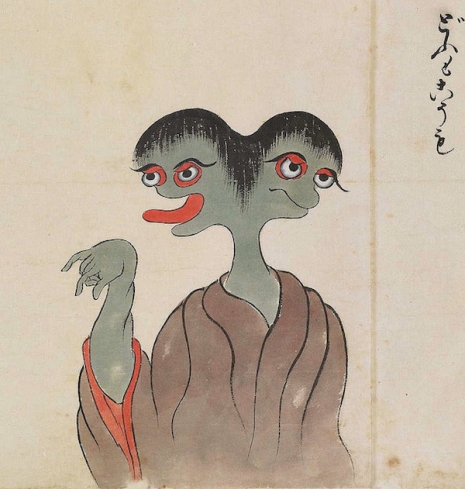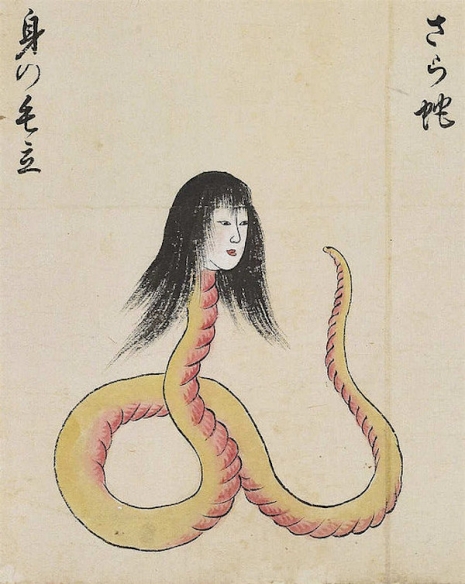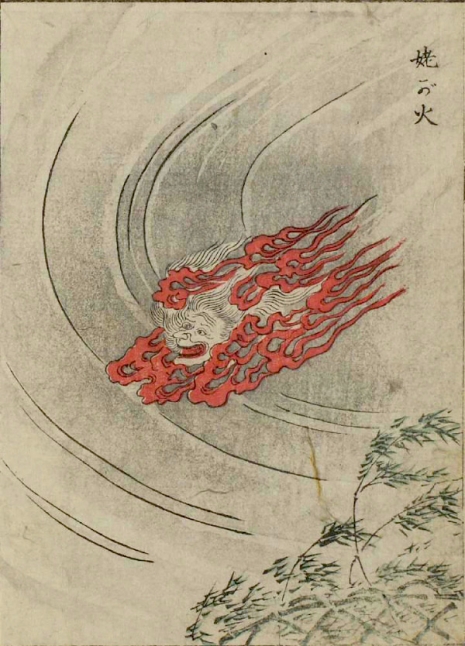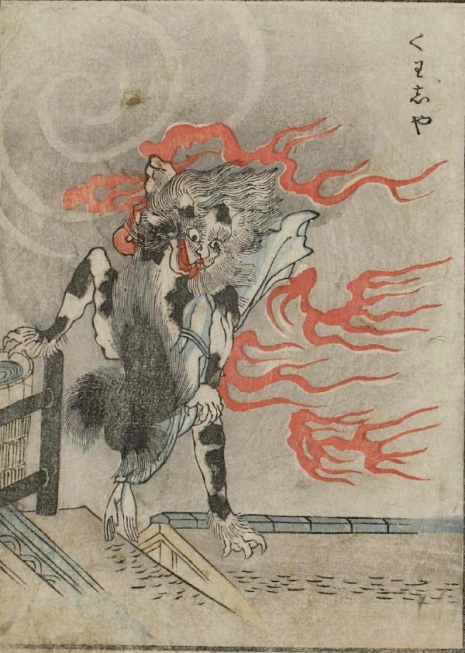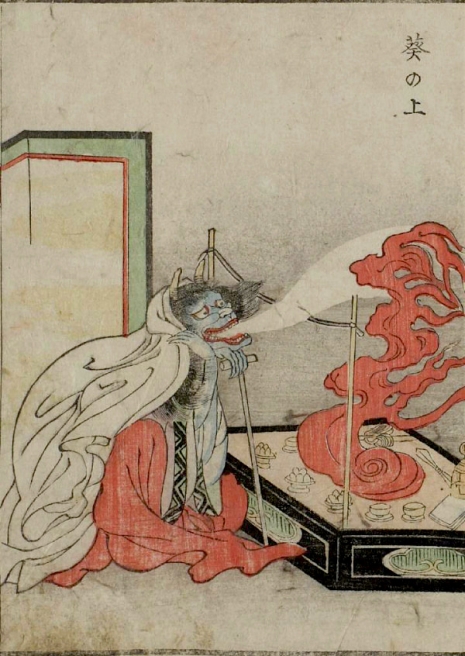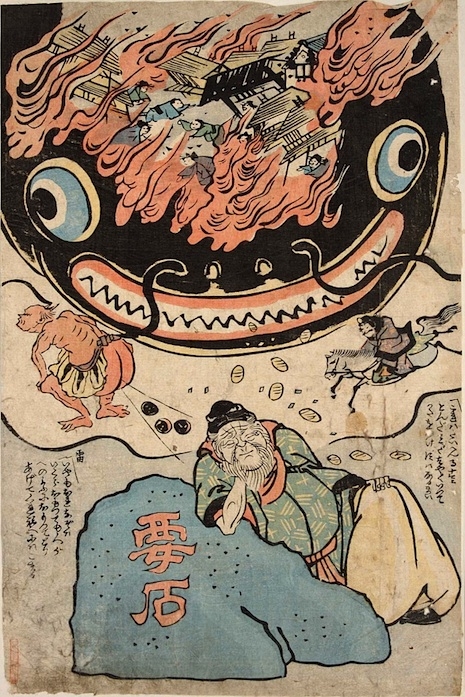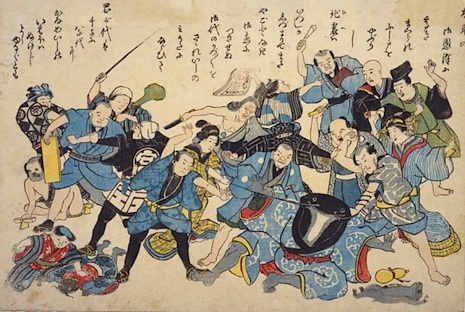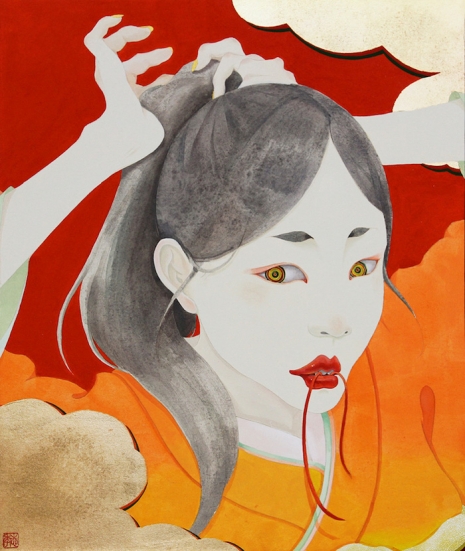
Room #3110 of the Park Hotel, Tokyo, has a large plate glass window with an impressive view of Mount Fuji. The view is one of the reasons for booking the room. The other, more important reason, is room #3110 has been designed and painted by artist Shiki Taira. It is room #30 in the hotel’s series of apartments designed by different Japanese artists. The hotel management’s intent is to offer guests a “fresh look at art”
To touch the beauty of the soul, surely a hotel which refreshes mind and body, and where more time is available for relaxation than in art museums, is an ideal venue for such an experience.
Taira’s room #3110 features a variety of Japanese gods flying across the walls, which when night falls, their reflection makes it appear as if these gods are flying over Mount Fuji. Taira adds:
I wanted to create a room where guests will be surrounded by auspicious Japanese motifs…They are lucky Japanese motifs such as the Fujin (Wind God), Raijin (Thunder God), Shichifukujin (Seven Lucky Gods) and Ichimoku-sama (One-Eyed God)...
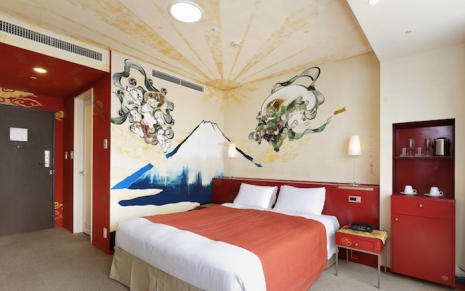
Part of room #3110 designed and painted by Shiki Taira.
Born in Tokyo in 1990, Taira studied at the Department of Design, Tokyo University of Arts, where she graduated in Fine Art from the Department of Drawing and Decorative Art in 2013. Taira first exhibited her work at the 0+Ten Gallery, Tokyo, with further shows quickly following at the Sato Museum of Art, the ShinPA 10th, Gallery Art Morimoto, and the Seizan Gallery. She has been described as “a cutting edge artist” who is known for “her unique yōkai world that unfolds on silk with excellent brush works.”
Taira’s paintings incorporate traditional yōkai—the gods, ghosts, shape-shifters, and monsters from Japanese mythology who live in the half-light, the twilight area between between known and unknown, who prey on the unwitting and the lost—and reimagines them in a contemporary setting. Taira has said of her work that she likes to deform an individual’s distinctive features which then allows her to bring out images of the phantoms underneath. In Japan, she says:
We have an idea the gods dwell in various creatures and nature traditionally in Japan. Phantom is a part of these ideas and painted and printed in subject of Ukiyo-e in Edo-period by Hokusai Katsushika and others.
Her work suggests our lives are haunted by strange obsessions and superstitions which can sometimes shape our actions.


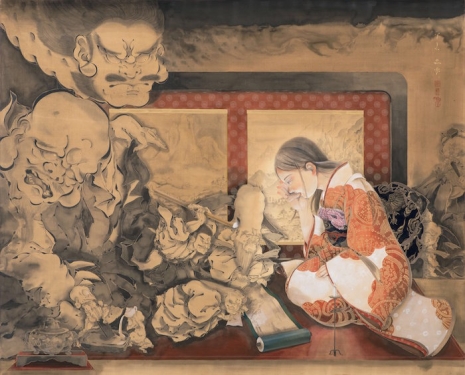
More beautiful, ghostly artworks after the jump…








